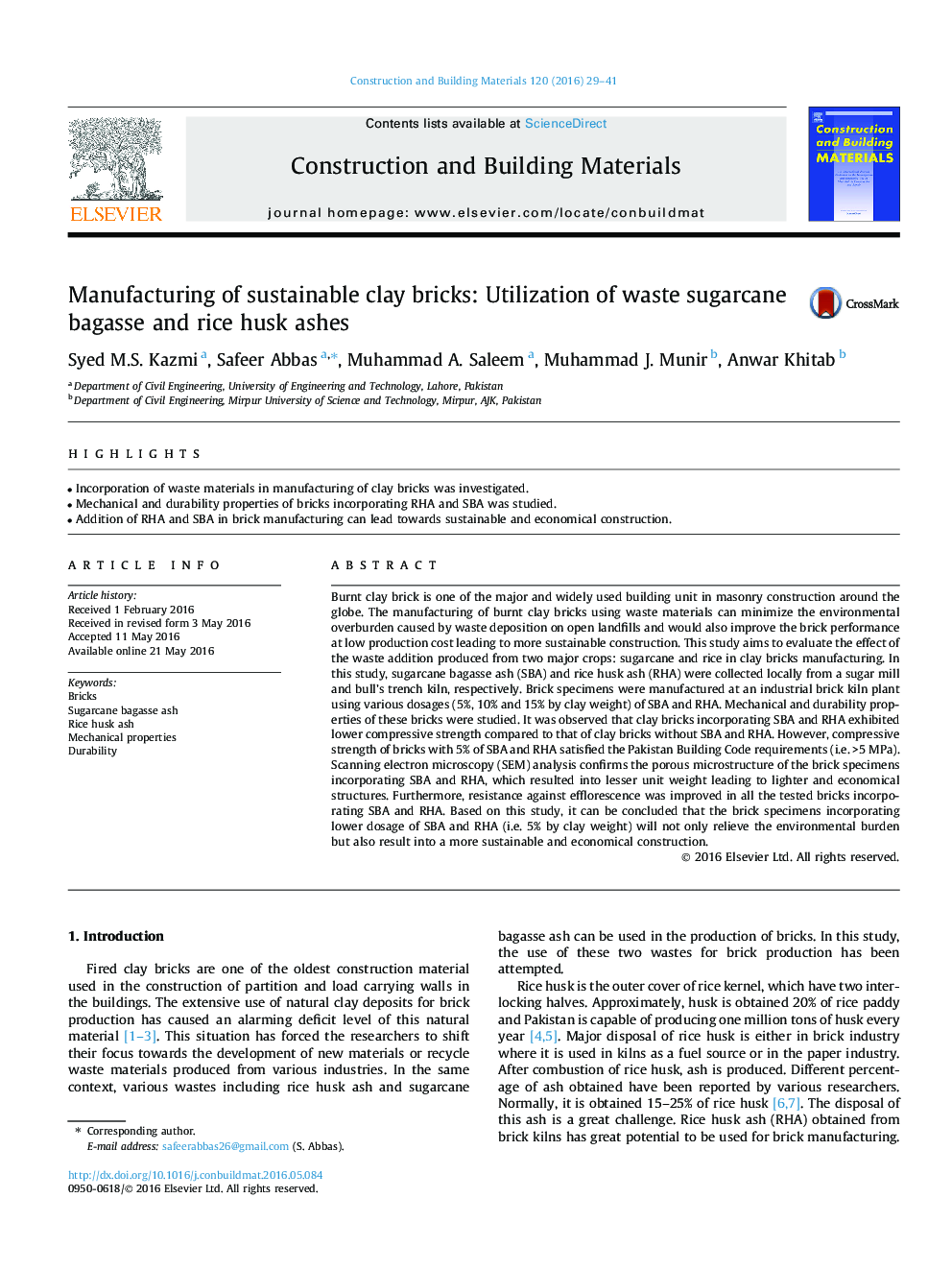| کد مقاله | کد نشریه | سال انتشار | مقاله انگلیسی | نسخه تمام متن |
|---|---|---|---|---|
| 255816 | 503533 | 2016 | 13 صفحه PDF | دانلود رایگان |
• Incorporation of waste materials in manufacturing of clay bricks was investigated.
• Mechanical and durability properties of bricks incorporating RHA and SBA was studied.
• Addition of RHA and SBA in brick manufacturing can lead towards sustainable and economical construction.
Burnt clay brick is one of the major and widely used building unit in masonry construction around the globe. The manufacturing of burnt clay bricks using waste materials can minimize the environmental overburden caused by waste deposition on open landfills and would also improve the brick performance at low production cost leading to more sustainable construction. This study aims to evaluate the effect of the waste addition produced from two major crops: sugarcane and rice in clay bricks manufacturing. In this study, sugarcane bagasse ash (SBA) and rice husk ash (RHA) were collected locally from a sugar mill and bull’s trench kiln, respectively. Brick specimens were manufactured at an industrial brick kiln plant using various dosages (5%, 10% and 15% by clay weight) of SBA and RHA. Mechanical and durability properties of these bricks were studied. It was observed that clay bricks incorporating SBA and RHA exhibited lower compressive strength compared to that of clay bricks without SBA and RHA. However, compressive strength of bricks with 5% of SBA and RHA satisfied the Pakistan Building Code requirements (i.e. >5 MPa). Scanning electron microscopy (SEM) analysis confirms the porous microstructure of the brick specimens incorporating SBA and RHA, which resulted into lesser unit weight leading to lighter and economical structures. Furthermore, resistance against efflorescence was improved in all the tested bricks incorporating SBA and RHA. Based on this study, it can be concluded that the brick specimens incorporating lower dosage of SBA and RHA (i.e. 5% by clay weight) will not only relieve the environmental burden but also result into a more sustainable and economical construction.
Journal: Construction and Building Materials - Volume 120, 1 September 2016, Pages 29–41
